

William Stopford
The cars axed in 2025 that we'll miss the most
21 Hours Ago
The RAV4 Hybrid continues to sell like hotcakes with months-long wait lists. James revisits the Cruiser AWD Hybrid to see what all the fuss is about.
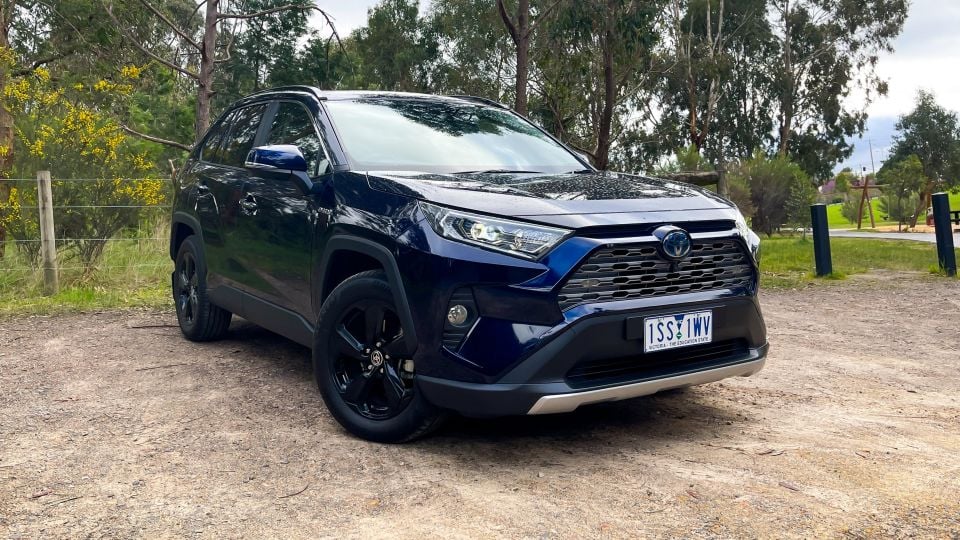
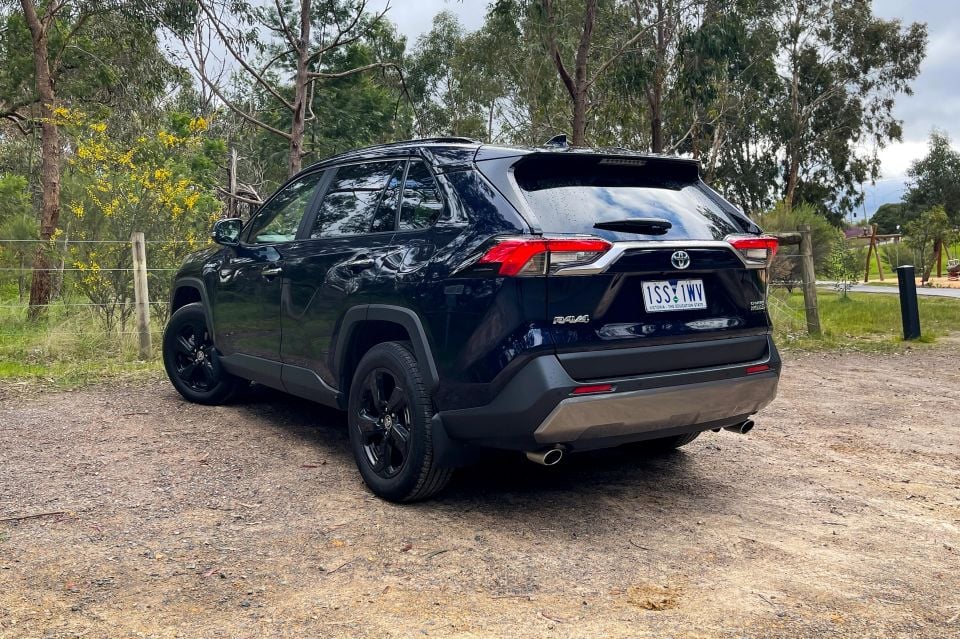

Marketplace Editor
New from
$31,695
excl. on-roads

Marketplace Editor
New from
$31,695
excl. on-roads


Marketplace Editor
New from
$31,695
excl. on-roads

Marketplace Editor
New from
$31,695
excl. on-roads
Quickly see how this car stacks up against its competition. Select any benchmark to see more details.
Where expert car reviews meet expert car buying – CarExpert gives you trusted advice, personalised service and real savings on your next new car.
You’re looking at the hottest car in Australia right now.
If you discount the Ford Ranger and Toyota HiLux – which are technically ‘commercial vehicles’ – the Toyota RAV4 is currently our nation’s most popular passenger vehicle or SUV.
Some 72.8 per cent of RAV4 sales are petrol-electric hybrid models (14,821 as of 30 June 2021), Toyota’s mid-size SUV is also driving Australia’s electrified vehicle uptake alongside the Corolla and Camry.

It could well be the top-seller in Australia if it wasn’t for supply constraints, which have seen wait times for some variants out to over six months.
On test we have the Toyota RAV4 Cruiser AWD Hybrid, one of the most in-demand versions according to the Japanese manufacturer, and retailing for just over $50,000 on the road.
A very mildly refreshed model is due sometime in the early stages of 2022, but the fundamentals will largely be the same. Does it still live up to the hype?
Pricing is unchanged through to the tail end of 2021, meaning the RAV4 Cruiser AWD Hybrid on test remains $46,415 plus on-road costs.
Using a Melbourne postcode, that equates to a drive-away starting price of just over $51,100.
All prices exclude on-road costs.
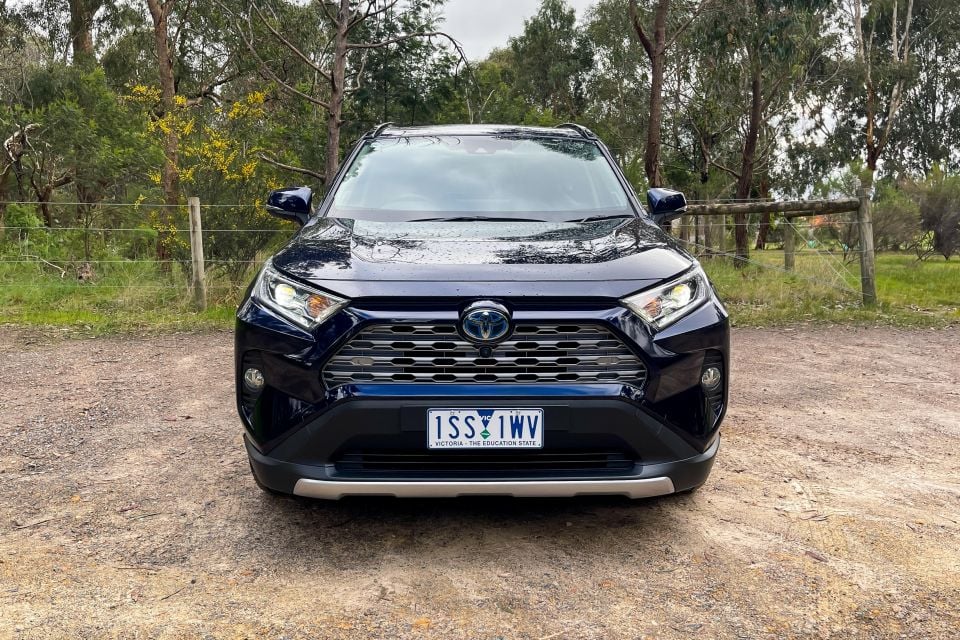
Compared to most rivals, the top-spec RAV4 is actually on the more affordable side.
Flagship versions of competing nameplates are starting to head well into the $50,000-60,000 bracket before on-road costs in 2021.
Key rivals include:
All prices exclude on-road costs unless specified (D/A)
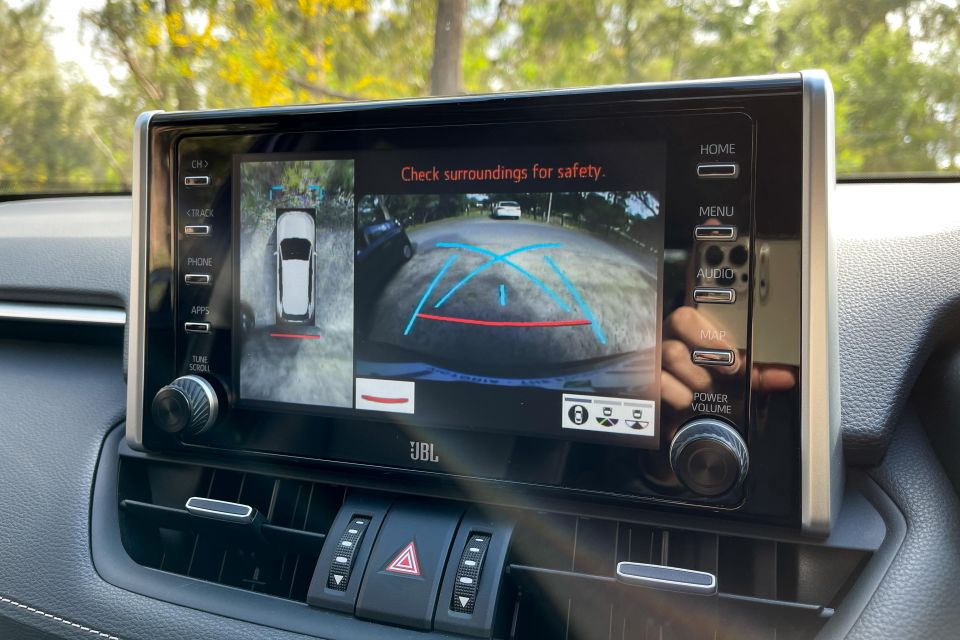
Buy your new car without the stress. It's fast, simple and completely free.

Great service from Travis and team, second time I have used this business would not hesitate to recommend them to anyone
Craig C.
Purchased a Ford Ranger in Sunshine Coast, QLD
CarExpert helped Craig save thousands on his Ford Ranger, now let us save you on your next new car.
Find a dealThe RAV4 Cruiser Hybrid scores the following highlights:
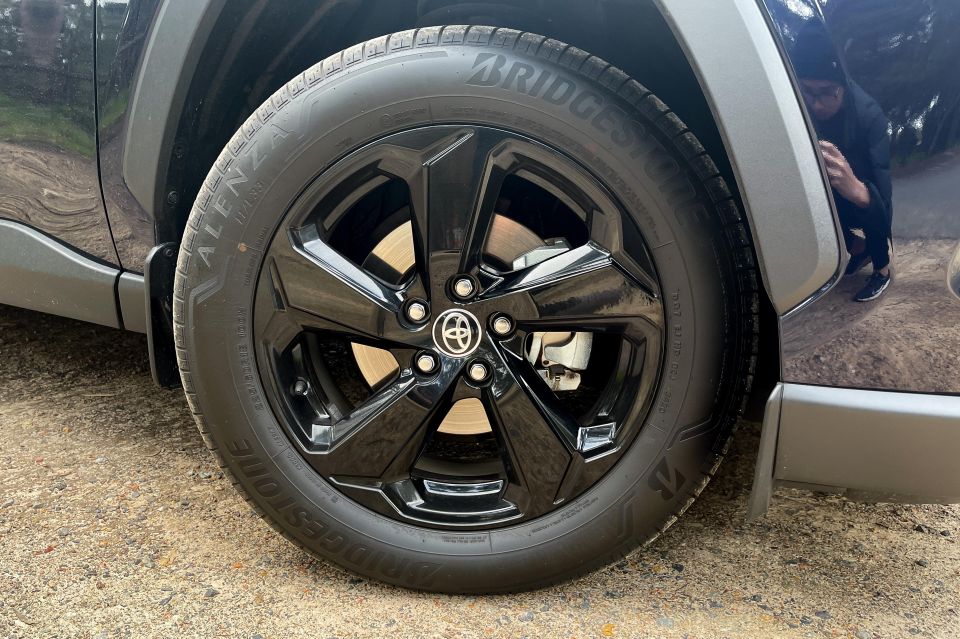
That’s on top of equipment featured lower down in the range, including:

The Toyota RAV4 wears a five-star ANCAP safety rating based on tests conducted in 2019.
It scored of 93 per cent for adult occupant protection, 89 per cent for child occupant protection, 85 per cent for vulnerable road user protection, and 83 per cent for safety assist.
The following safety features are standard across the range:
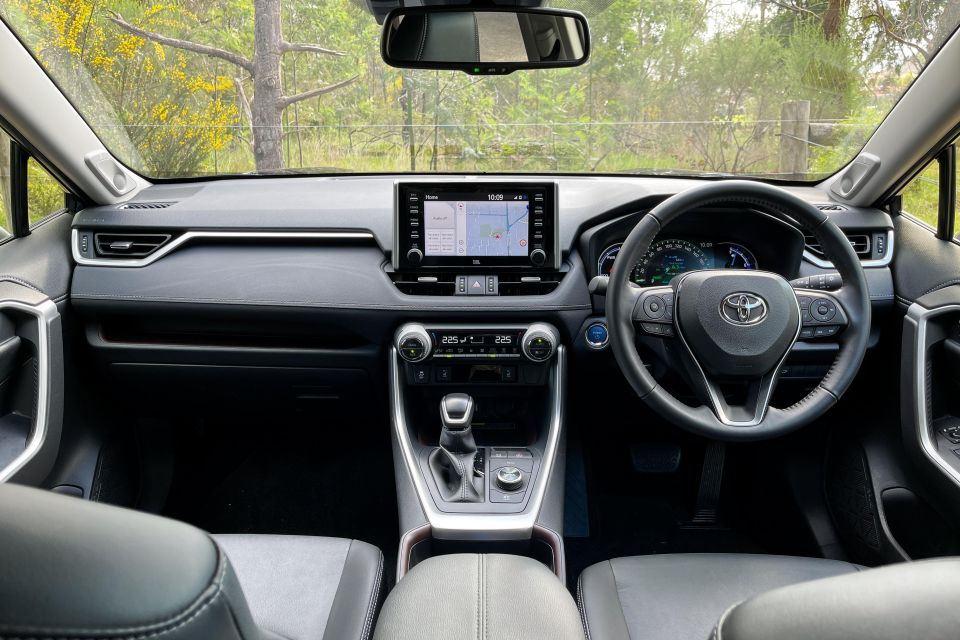
The interior presents pretty well two years after the current-generation RAV4’s launch, though some elements are a little dated.
The clean, uncluttered layout with more straight lines has definitely aged better than Toyota’s previous, more quirky efforts, and build quality feels rock solid.
Opting for the Cruiser and Edge gets you padded, leatherette-lined door tops compared to the hard plastic of lower grades, but otherwise the fundamentals are the same. The touchpoints are all soft-touch or leather/leatherette-lined, the ergonomics are sound, and visibility is great.
Electric driver’s seat adjustment with memory is handy, including lumbar, meaning most should be able to find a good driving position. I’m a big fan of the steering wheel which is on the smaller side, and feels great in the hand.
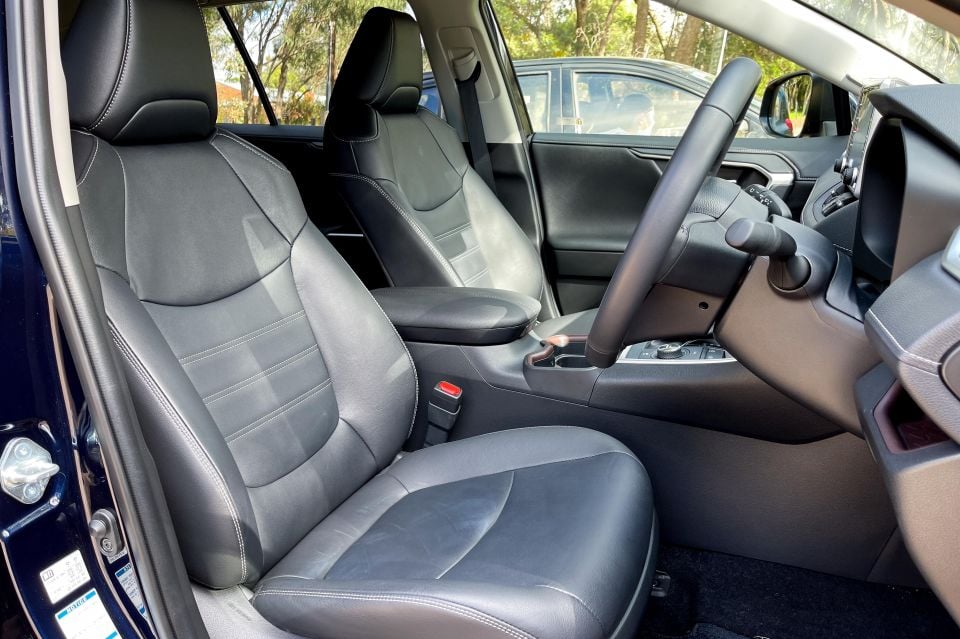

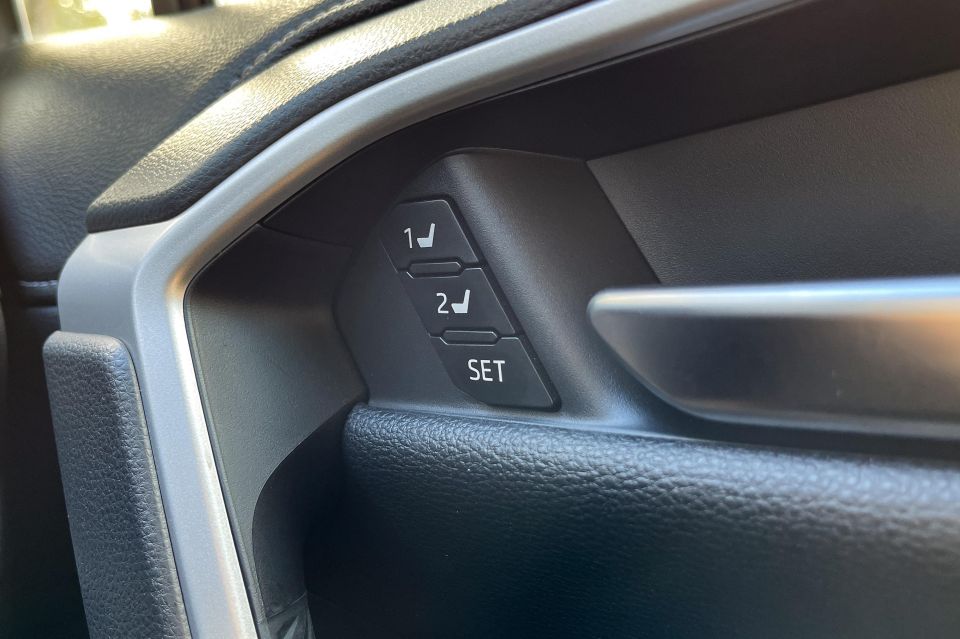
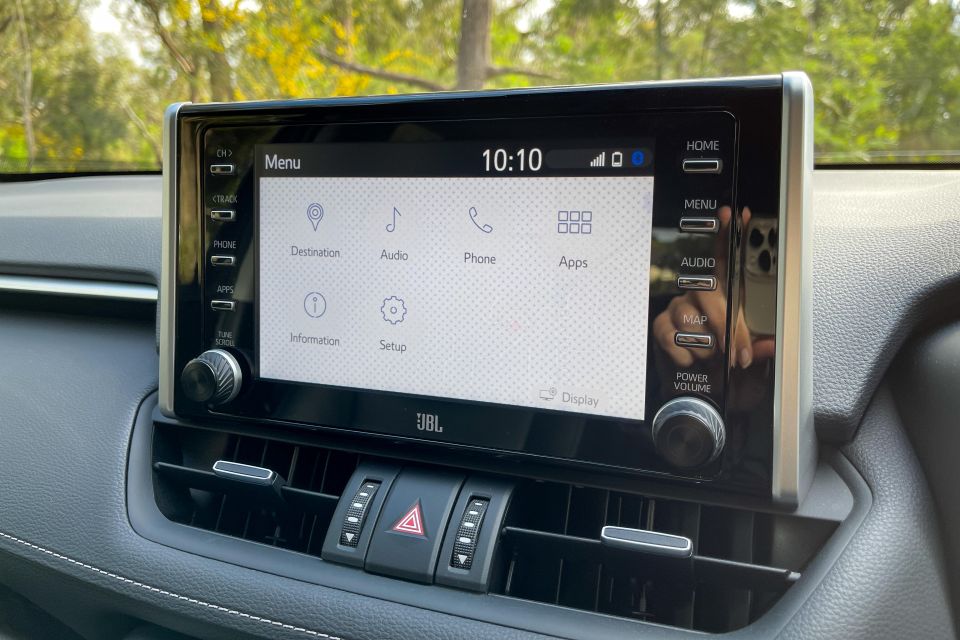
Where the RAV4 feels a little behind the benchmarks is in its displays and infotainment system. The 8.0-inch central touchscreen is well featured on paper – offering navigation, wired Apple CarPlay and Android Auto, as well as DAB radio – but in operation it feels quite old hat.
The graphics aren’t super flashy, the screen resolution is fairly average compared to Korean and European alternatives, and response times are laggy. It does the job, don’t get me wrong, but it’s a shame Toyota continues to be an also-ran in the connectivity arena. I like the physical shortcut buttons, though.
The 7.0-inch display in the driver’s instrument cluster is more of a selling point. You can choose between a digital speedo or have a virtual dial (I prefer the latter, even though there’s no digital speed readout), and there’s plenty of sub-menus to flick through to monitor the different power systems on the fly.
The cluster also changes colour depending on the drive mode – you’ll notice the green dial in these photos as I had the RAV4 in Eco mode most of the time.
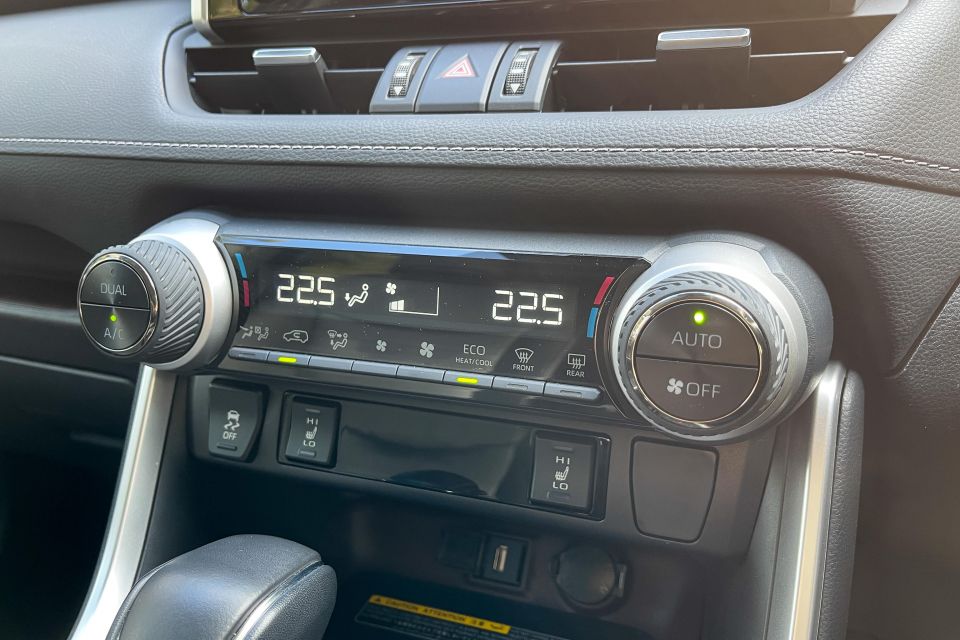
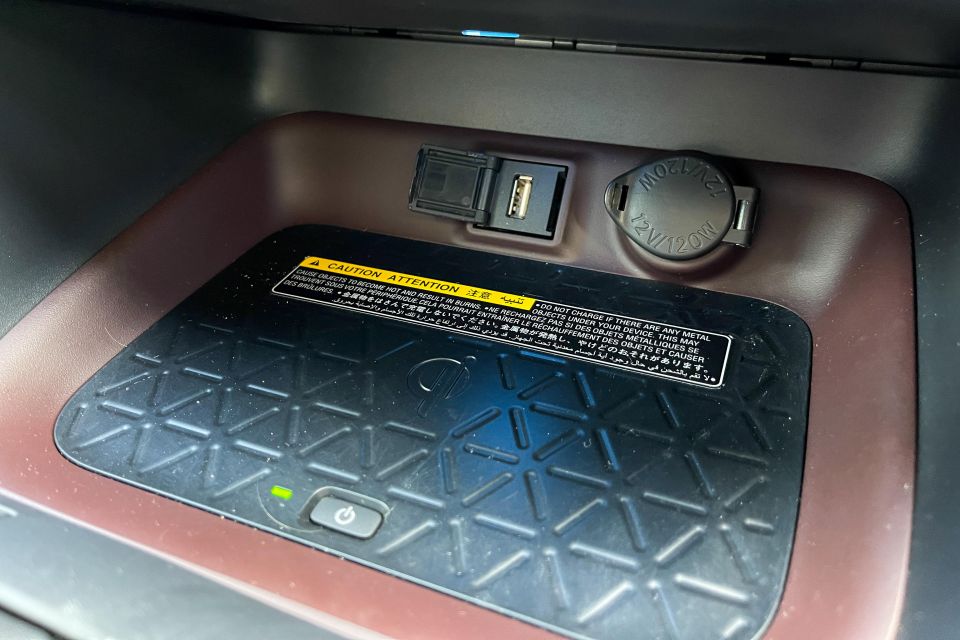
A wireless phone charger lives under the centre stack, though if you’re tethering your phone to smartphone mirroring it’s redundant, and the simple climate controls with chunky, rubberised rotary dials have a rugged skew.
Space and storage up front is pretty good, with a decent cubby under the front-centre armrest, deep door bins that can accommodate larger bottles, as well as cupholders between the front seats. There’s also the shelf midway up the dashboard in front of the passenger that can hold phones and wallets.
Ahead of the phone charging pad is a single USB-A outlet and a 12V socket, not quite up there with some rivals that offer at least two outlets in the first row.
There’s also heated seats, but not ventilated front pews which are more useful during Australia’s hot summers. Fret not, though, the 2022 RAV4 Cruiser will get ventilated seats and a powered front passenger seat as running changes.
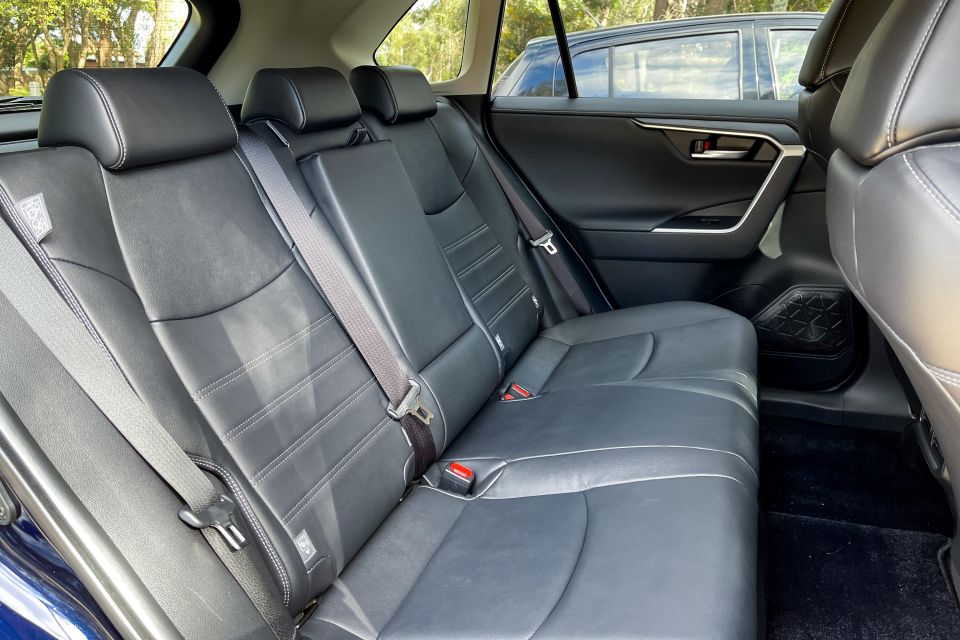
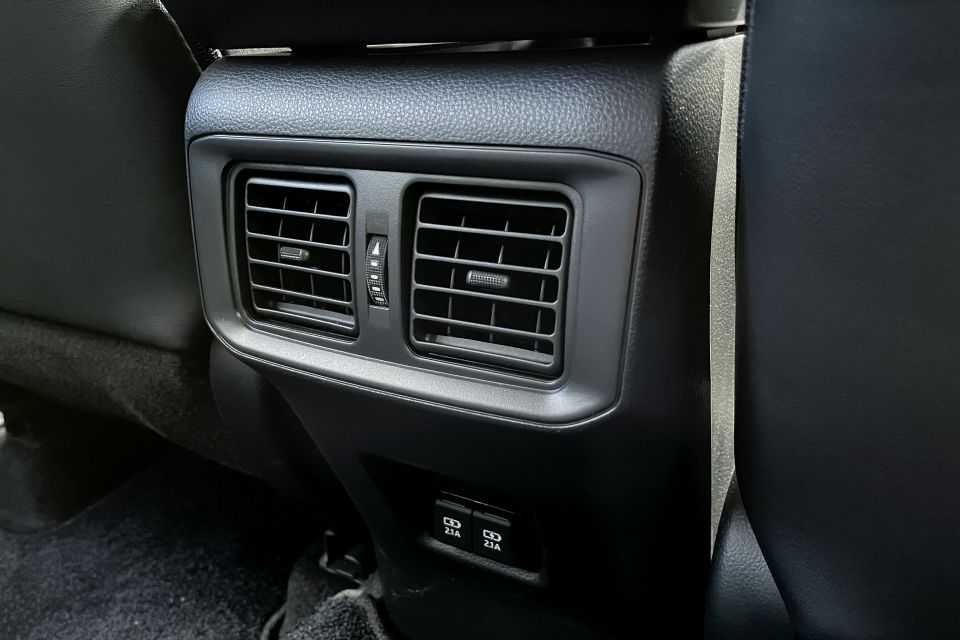
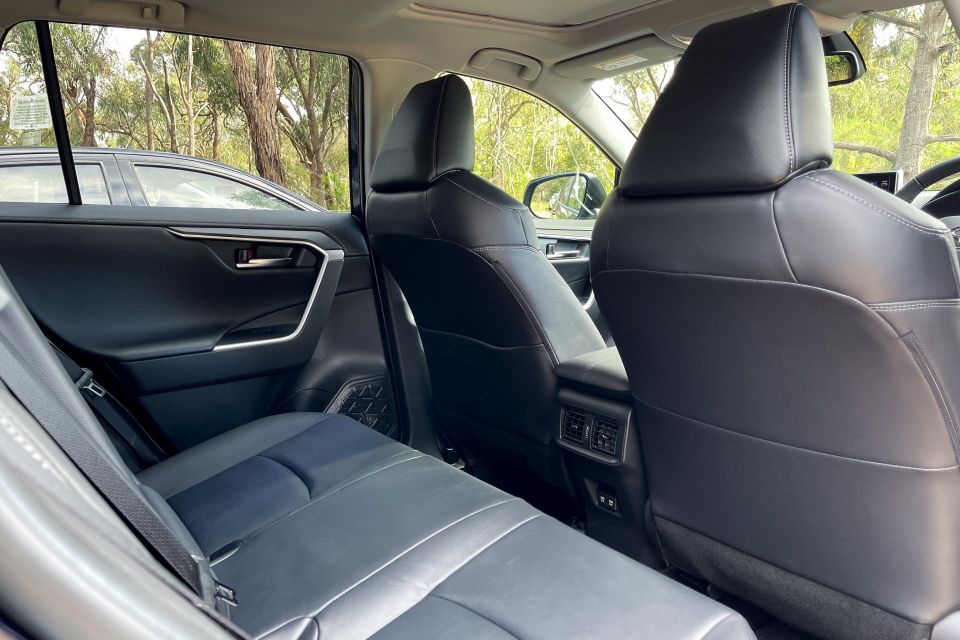
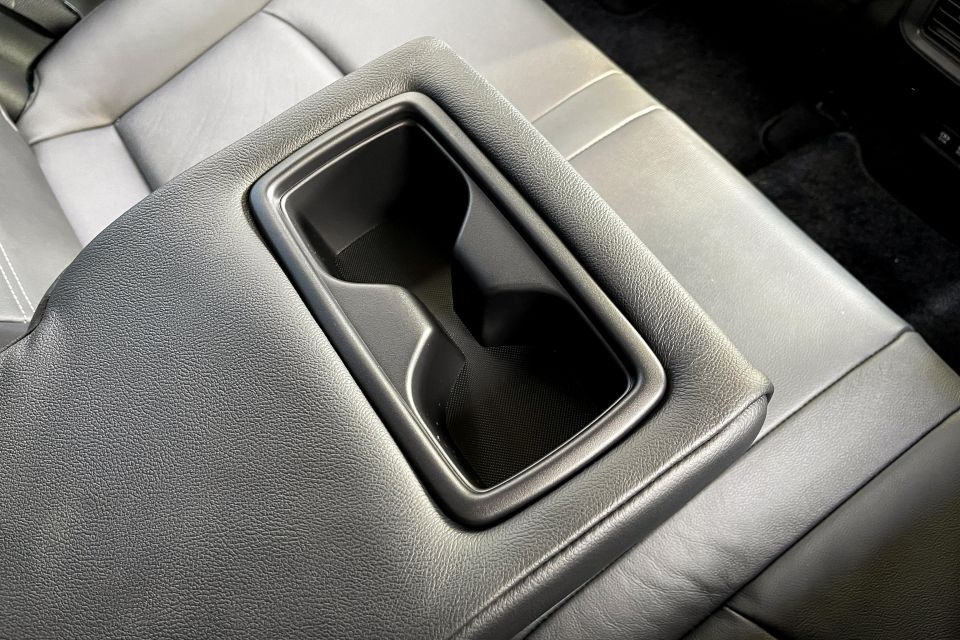
In the second row the Toyota continues to be one of the class leaders, which more than enough room for two tall adults even behind 6’1-ish me as the driver.
Directional air vents and a pair of 2.1A USB-A charge points live at the rear of the centre console, while a map pocket behind the front passenger seat and a fold-down centre armrest with cupholders round out the second-row amenities.
ISOFIX anchor points on the outboard positions mean parents can get little ones secured, and there’s bottle holders in the doors for added storage.
Should you need to fit a third person in the middle, the seat itself is wide enough to be reasonably comfortable for longer journeys, but if you are putting three teenagers in the back regularly (like how I grew up), it may be worth looking at a Kluger.

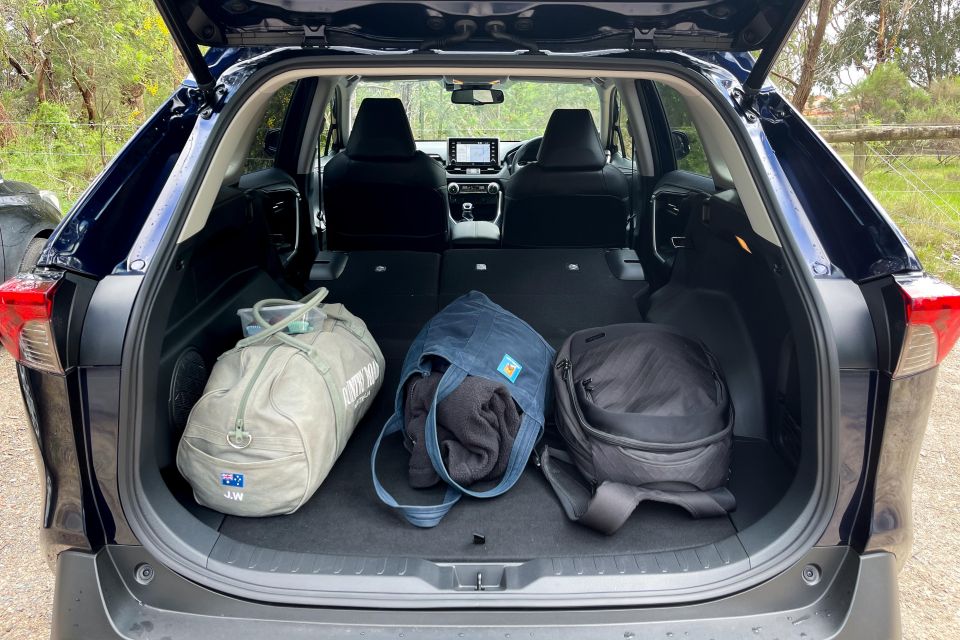
Toyota quotes a boot capacity of 542L for all versions of the RAV4, with a space-saver spare living under the boot floor across the range. You can, however, option a full-size spare on the base GX.
Oddly, the company doesn’t quote a luggage volume figure with the rear seats folded, but I can attest that with the 60:40 rear bench folded the bay is impressively flat, while also being tall and wide enough that most larger objects can fit.
The boot floor has two levels to open up the RAV4’s five-seat boot capacity a little more, and there’s a netted cubby to the sid for smaller items.
It’s no wonder the Toyota RAV4 has proven to be so popular with Australian families, given its spacious and versatile interior.

Hybrid versions of the Toyota RAV4 team a 2.5-litre naturally-aspirated petrol engine running the more efficient Atkinson cycle with a nickel-metal-hydride battery pack with either two (2WD) or three (AWD) electric motor-generators.
In the case of our AWD tester, there’s to AC synchronous permanent magnet units up front, and one on the rear – allowing e-AWD or ‘e-Four’ as Toyota calls it. The battery unit capacity is rated at 6.5Ah, and drive is channeled through an e-CVT.
The petrol engine makes 131kW (5700rpm) and 221Nm (3600-5200rpm) on its own, while one of the front motor-generators contributes 88kW/202Nm and the rear-mounted unit in AWD models outputs 40kW and 121Nm.
As is the case with Toyota hybrids, system outputs aren’t as simple as adding the values together due to differences in each power source’s peak. The AWD version offers a combined 163kW, 2WD variants quote 160kW. No system torque figure is quoted officially.
A key benefit of opting for a hybrid is fuel economy, and regardless of two- or all-wheel drive the RAV4 delivers impressive numbers, at least on paper.
Combined fuel consumption is rated at 4.8L/100km for our tester, with 91 RON regular unleaded the recommended minimum octane rating.
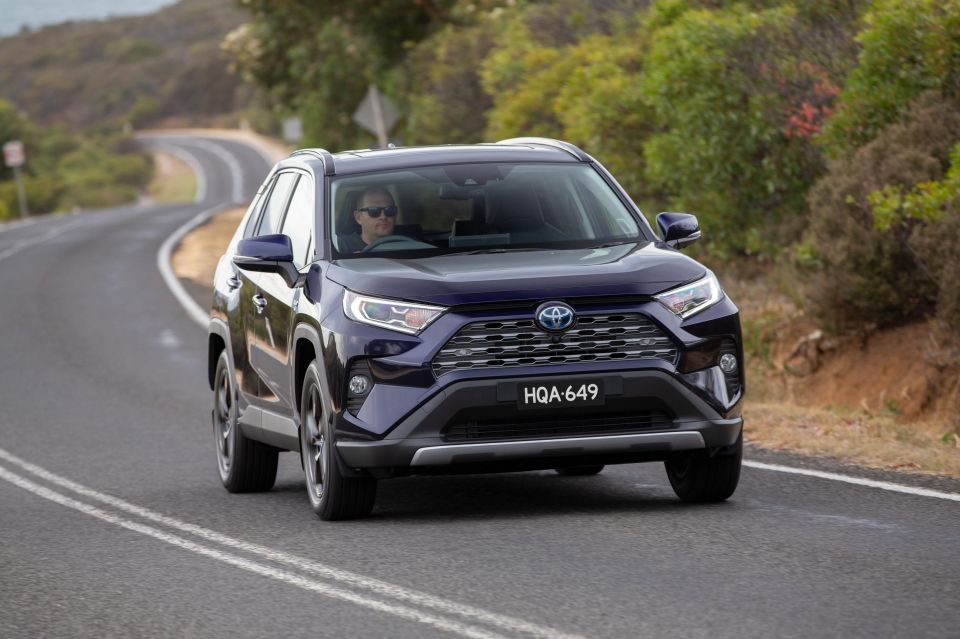
It’s been a while since I’ve touched a RAV4, and this refresher in the top-spec hybrid reminded me why this vehicle is so popular.
Toyota products based on the TNGA platform have consistently scored well for their ride and handling balance, offering a direct enough connection to keep you involved while being impressively comfortable all round.
The RAV4 Hybrid is no different. Steering this mid-size SUV is wonderfully predictable and fluid, and it’s just as at home on pimpled inner-city streets as it is out on the freeway.
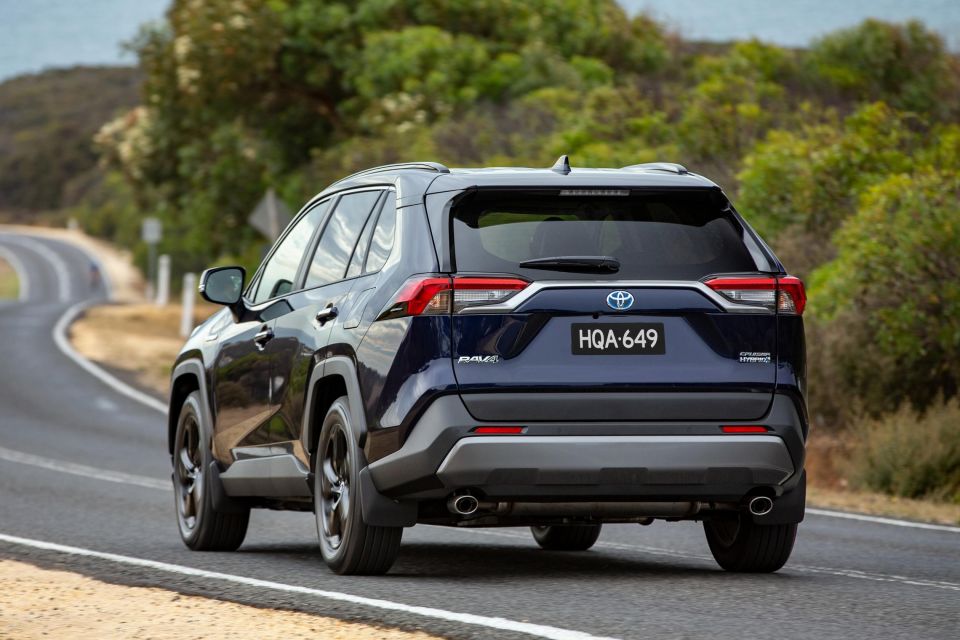
Where expert car reviews meet expert car buying – CarExpert gives you trusted advice, personalised service and real savings on your next new car.
While the AWD Hybrid setup claims a pretty respectable 163kW system power output, don’t go trying to drag a Tiguan 162TSI from the lights. Toyota’s CVT-equipped hybrid setup is best driven in a measured, relaxed manner.
It almost always sets off on e-power, and the petrol engine kicks in once things are rolling. You can silently putt along below 40km/h on flat ground or descents.
Hit the throttle a little harder and the 2.5L petrol quickly fires, as the CVT flares revs to keep you in the power band. As is the case with Toyota’s hybrid engines, pushing hard can result in a vocal, unrefined soundtrack.
When you’re not wringing its neck, the RAV4 Hybrid gets along in a smooth and relaxed manner, and the shuffling between power sources is generally pretty seamless bar the change in sound.
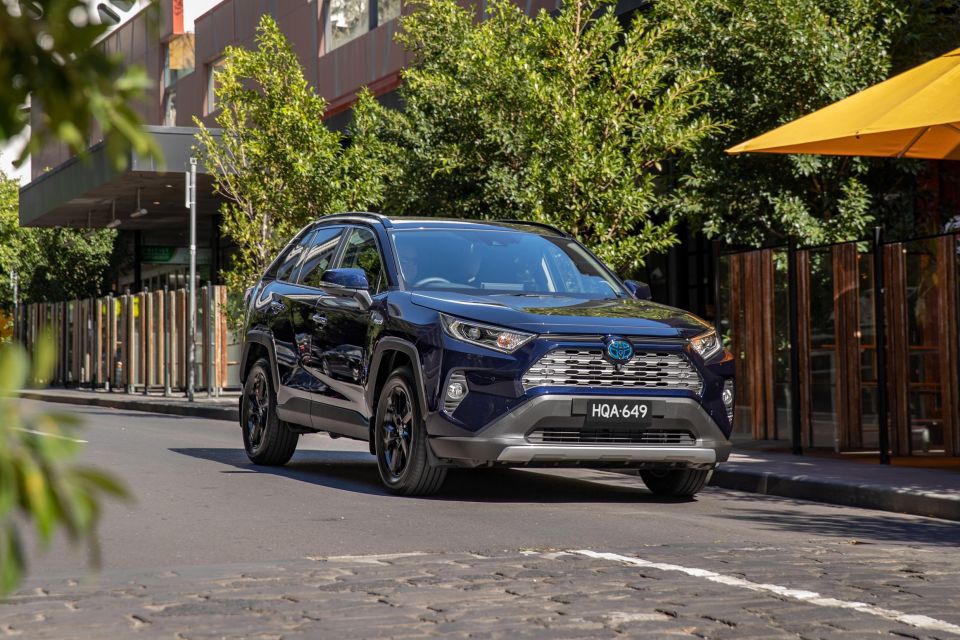
It’s best suited to urban environments where it can better draw upon its electrified components and save fuel. At certain points during my time with the car I saw an indicated average figure of around 4.5L/100km.
That doesn’t mean it falls apart on the highway though. You’ll require a bit more from the petrol engine to get there, but the petrol-electric RAV4 will happily sit at triple figures.
Fuel consumption with consistent highway use will have it sitting in the low 5.0L/100km mark, and there’s enough grunt on tap for 110km/h zones or for overtaking – just be liberal with your right foot.
When things get twisty the RAV4 is happy to play along, too. As noted earlier the TNGA underpinnings and communicative controls mean it’s not a bore to pilot this thing through bends, and if you flick it into Power mode both power sources team up to give you a bit of shove.

Overall refinement is generally pretty good, though not class leading. Rougher road surfaces transmit some tyre roar through the floor, and the grumbly petrol engine can get vocal up hills or under hard throttle.
Toyota’s suite of assists are impressive. Where previous generations of product had overzealous steering corrections and an infuriating range of beeps and bongs, this latest iteration is intuitive, more natural and more likely to be kept on.
Adaptive cruise control and Lane Tracing Assist work well to take the load off longer freeway stints, while blind-spot monitoring, rear cross-traffic alert and surround cameras aid visibility at various speeds.
It makes the RAV4 a very easy car to live with, and its all-round consistency and competency is no doubt a key driver to its sales success not just in Australia but globally.

Like the wider Toyota range, the RAV4 is covered by a five-year, unlimited-kilometre warranty.
Stick to your annual service schedule and the company extends the engine and driveline warranty to seven years, while hybrid batteries are covered for up to 10 years provided logbook maintenance is conducted during that period.
Toyota Australia also offers up to five years (60 months) or 75,000km of capped-price servicing, with intervals of 12 months/15,000km for the RAV4. The first five visits cost $230 each, making it one of the cheapest vehicles in its segment in this area.
In addition to the bargain maintenance costs, you’ll spend less time at the pump with the RAV4 Hybrid. I managed 6.2L/100km (indicated) without really trying, and that included a lot of very short commutes to the local shops not allowing the petrol engine to warm up properly as well as some extended freeway stints which don’t really utilise the hybrid system’s strengths.
I did see mid- to high-fours at certain points in the week, so if you drive in a mix of conditions on a regular 10-20km commute you’ll easily match the manufacturer’s claim.
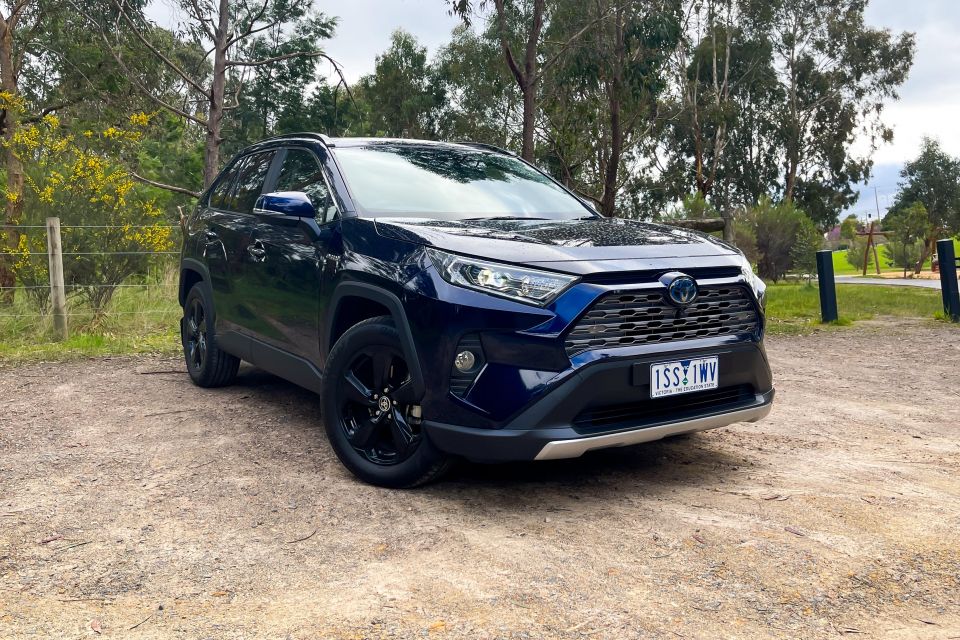
My time with the RAV4 Cruiser AWD Hybrid really drove home why this vehicle is so popular.
The balanced dynamics, comfortable ride, practical cabin and excellent hybrid fuel efficiency are just some of the many reasons why the latest Toyota RAV4 makes so much sense.
It’s also sharply-priced, well-featured and comes with a dirt-cheap maintenance schedule. What’s not to love?
Well, we’d like to see some of those promised 2022 features here sooner, and perhaps a snappier, higher-resolution infotainment interface, but other than that there’s not much to complain about.
Personally, I’d save the $3000 for the eFour AWD system and stick with the front-drive Cruiser Hybrid, which is something of a bargain. If only you didn’t have to wait the better half of a year to get your hands on one…
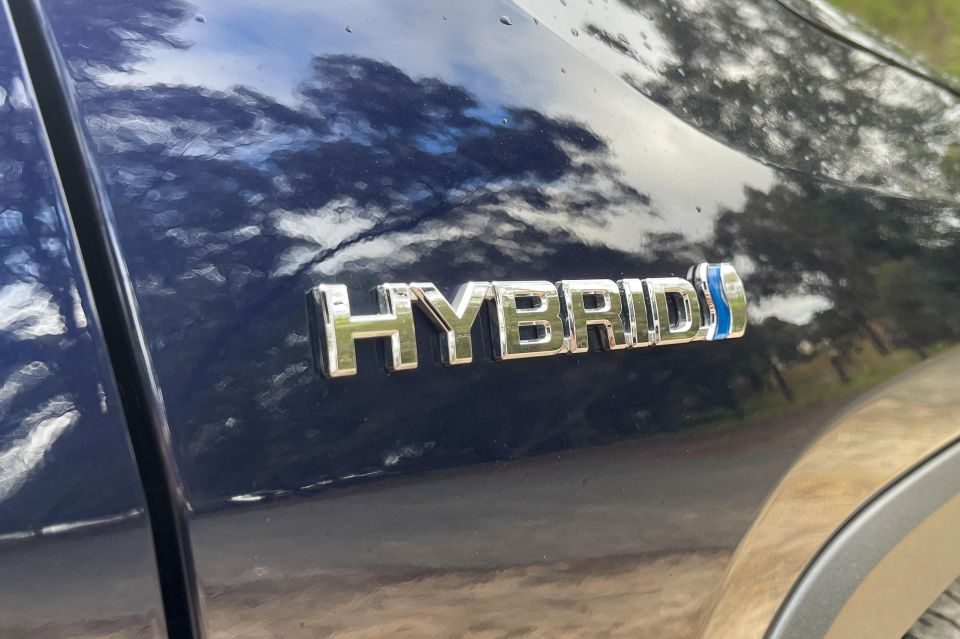
Click the images for the full gallery
MORE: Everything Toyota RAV4
Where expert car reviews meet expert car buying – CarExpert gives you trusted advice, personalised service and real savings on your next new car.
James Wong is an automotive journalist and former PR consultant, recognised among Australia’s most prolific motoring writers.


William Stopford
21 Hours Ago


Matt Campbell
1 Day Ago


William Stopford
2 Days Ago


Josh Nevett
4 Days Ago


CarExpert.com.au
5 Days Ago


Josh Nevett
6 Days Ago